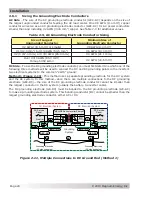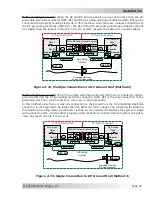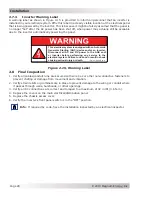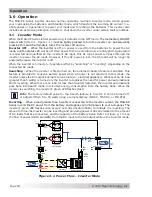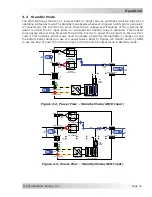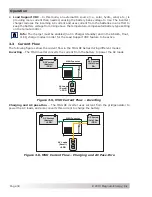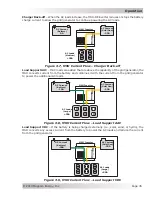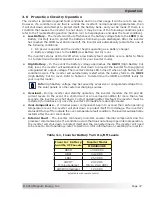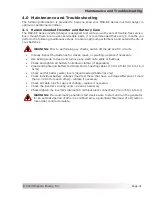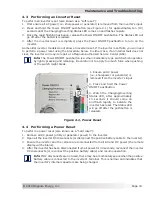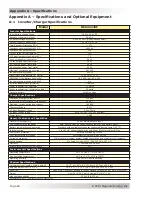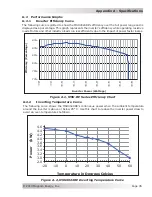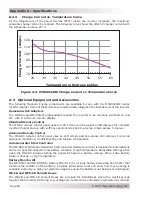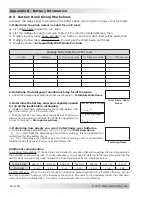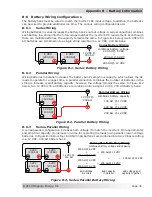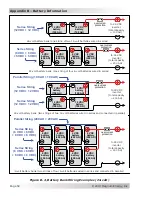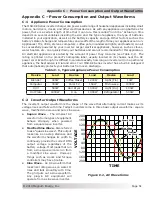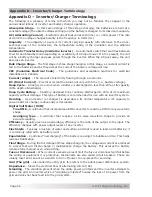
©
2013 Magnum Energy, Inc.
Page 38
Operation
3.7 Inverter
Startup
ON/OFF Switch
– The inverter can be turned on and off by lightly pressing and releasing the
Power ON/OFF switch on the front of the inverter (refer to Figure 3-11). When the inverter is
fi
rst
connected to the batteries, or when its automatic protection circuit has turned the inverter off, the
ON/OFF switch will need to be pressed to start the unit (or reset per Section 4.3). Once the inverter
has been turned on, pressing the Power ON/OFF switch alternately turns the inverter on and off.
WARNING:
The Power ON/OFF switch does not turn on or off the charger feature or
remove pass-thru power. If AC power (utility or generator) is connected and quali
fi
ed on
the AC input, this AC power will also be available on the AC output and is not controlled
by the Power ON/OFF switch.
Status LED Indicator
– The status indicator is a green LED (Light Emitting Diode) that provides
information on the operational mode of the inverter. Watch this indicator (refer to Figure 3-11) for
at least 10 seconds to determine the inverter’s operational condition from the information below:
• Off
– Indicates the inverter is off; there is no AC power (inverter, utility, or generator) at the
inverter’s output terminals. If the LED stays off after pressing the ON/OFF switch, there is a
fault condition such as: low battery, high battery, overload, over-temperature, or an internal
fault. Refer to the Troubleshooting section to help diagnose the fault condition.
• Slow Flash On
(blinks on for 4 seconds, then off for 4 seconds) – Indicates
fl
oat charging,
and the inverter is in Standby mode (the external AC power that is connected to the inverter’s
input is passing through the inverter and powering the inverter’s AC loads).
• Medium Flash On
(blinks on once every second):
When AC power is not connected to inverter input
– Indicates the inverter is on and using
energy from the battery. The inverter is either: 1) Inverting – providing full power to the
inverter loads; or 2) Searching – conserving power and waiting for a load to be turned on
that meets or exceeds the Search Watts parameter (5 watts is the inverter default setting).
When AC power is connected to inverter input
– Indicates absorb charging, and the inverter
is in Standby mode (the external AC power that is connected to the inverter’s input is passing
through the inverter and powering the AC loads on the inverter’s output).
• Fast
Flash
On
(blinks very quickly—
fl
utters) – Indicates the inverter is in equalize charge
(requires remote to enable) or the inverter is continuously in reset. If a remote was not used to
enable the equalize charge, then suspect the inverter is in reset. Refer to the Troubleshooting
section to help diagnose the fault condition.
• On
(solid) – Indicates bulk charging, and the inverter is in Standby mode (the external
AC power that is connected to the inverter’s input is passing through the inverter and is
powering the AC loads connected to the inverter’s output).
Charging/Inverting
Status LED indicator
Power ON/OFF
pushbutton switch
Figure 3-11, Power Switch and Status Indicator

